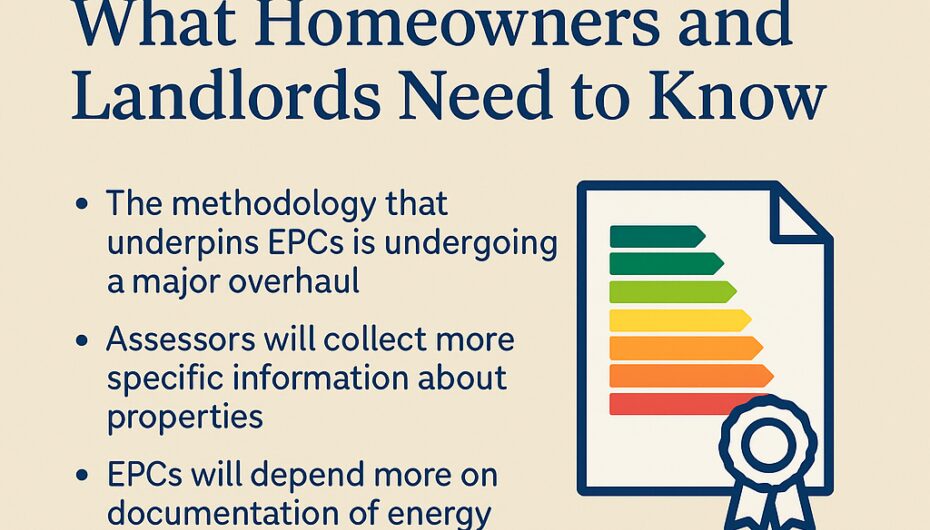 30th May 2025
30th May 2025
A New Chapter for EPCs: What Homeowners and Landlords Need to Know
There’s a big change on the horizon that could impact every homeowner, landlord, and property professional: the way Energy Performance Certificates (EPCs) are calculated is getting its most significant update in over a decade.
From mid-June, the methodology behind EPCs, specifically the Reduced Data Standard Assessment Procedure (or RdSAP for short), is being overhauled. It’s a technical-sounding change, but its impact is anything but abstract.
So, what does this mean for you? Let’s break it down.
Why the EPC System is Changing
EPCs are a familiar part of buying, selling, or renting out a property. They rate a home’s energy efficiency and suggest improvements. But until now, EPCs have relied heavily on assumptions, especially when certain building details weren’t available.
This has caused issues, particularly for flats and mid-terrace properties, which were often judged less energy-efficient than they really are. The new system aims to fix that, providing a more accurate picture of a home’s energy performance.
What’s New?
Under the updated RdSAP rules, energy assessors will be gathering much more detailed evidence. That means your EPC will now be based on specifics like:
- The type and condition of glazing (are those windows single or double-glazed, and how well are they holding up?)
- Verified heating system information, such as model numbers or manufacturer specs
- The presence of smart heating controls
- Accurate records of insulation upgrades, new windows, and other home improvements
In other words, if you’ve invested in making your property more energy-efficient, it’s now more important than ever to have the paperwork to back it up.
No Evidence? No Problem… But Also, Kind of a Problem
In the past, if a heating system couldn’t be identified, the system would use default assumptions, often underestimating energy efficiency. Now, if the necessary documentation isn’t there, the EPC score could be lower than before.
That’s why keeping clear records, receipts, and installation documentation is so critical. Without them, even genuine improvements might not show up on your rating.
Better Outcomes for Many Homes
The good news? These changes should benefit many property types. Flats and terraced homes, in particular, will now have heat loss calculated more accurately, potentially leading to higher EPC scores where they’re deserved.
There’s also a refined approach to measuring floor area and insulation levels, which will help better reflect how homes retain heat and use energy in real life.
What Should Landlords and Agents Do?
Trade body Propertymark is encouraging agents, like us, and landlords to prepare for these changes. That means:
- Keeping records up to date
- Being ready to share documentation during EPC assessments
- Helping tenants and contractors understand the value of proof
As Propertymark puts it: “EPC ratings might initially drop if no evidence is provided, even if improvements have been made, so having a clear paper trail can protect property owners from unnecessary retrofit costs.”
They’re also calling for more support from the government, especially for small landlords, around retrofit funding, guidance, and realistic implementation timelines.
Let’s Make the Most of the Change
At Boydens, we welcome changes that make the EPC system more robust, transparent, and helpful. These updates are about more than just paperwork, they’re about giving buyers, renters, and owners a clearer picture of how their home works, and what they can do to make it better.
Have questions? Want to know how your property might be affected? We’re here to help. Whether you’re looking to sell, let, or simply understand your home better, get in touch with our local experts today.







